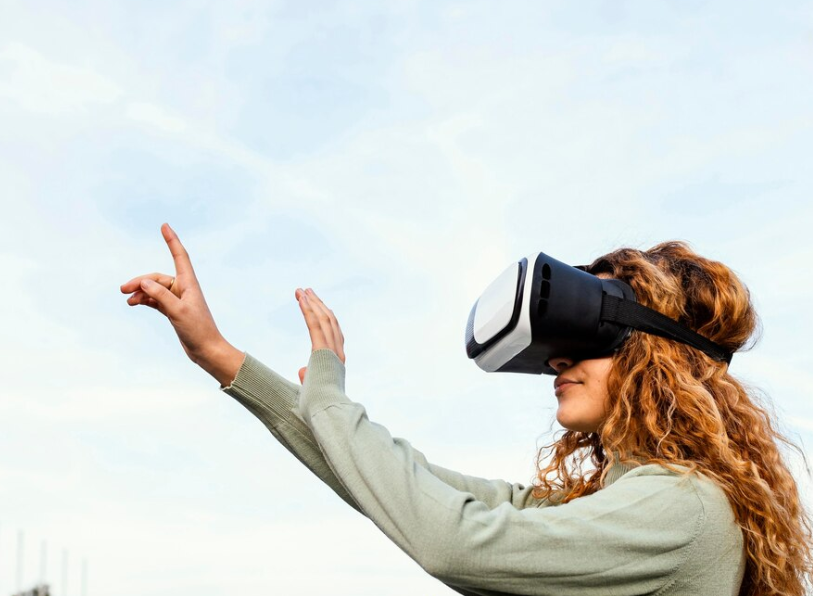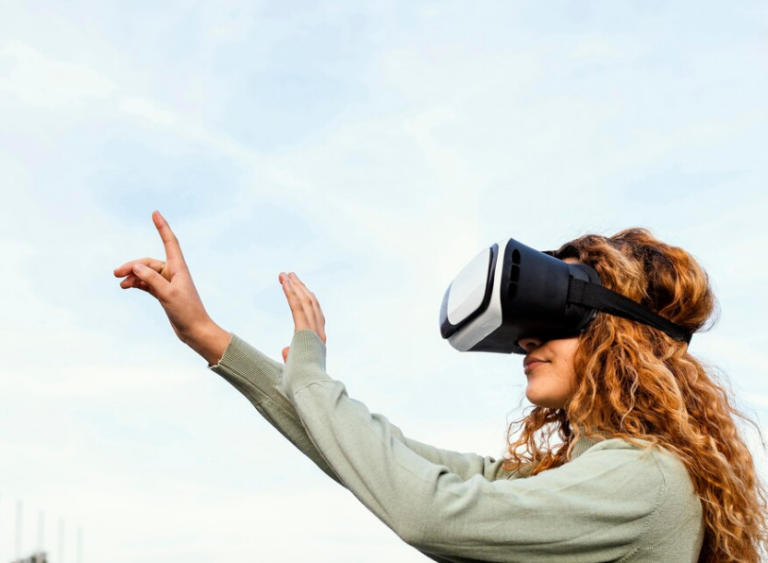Sandbox VR Dublin has quickly established a unique identity by providing an incredibly immersive experience that seems like it was created for a futuristic book. The €4 million venue, which is tastefully tucked away on Nassau Street, transports groups to fantastical worlds where virtual exploration blends with real-world movement. Participants, who are notably outfitted with state-of-the-art haptic suits and closely monitored by motion capture technology of Hollywood caliber, find themselves in a virtual world that feels remarkably natural — as though they are entering a lucid dream where reality bends effortlessly.
There’s a reason Sandbox VR Dublin is so popular. Supported fervently by pop stars like Will Smith, Katy Perry, Kevin Durant, and Justin Timberlake, the brand capitalizes on a significant change in consumer preferences: audiences, especially younger ones, now prefer shared, interactive experiences to passive observation. This demand has noticeably increased in recent months in large cities, where immersive group activities are thought to be very effective at redefining traditional leisure activities and fostering stronger social ties.
| Attribute | Details |
|---|---|
| Location | 39 Nassau St, Dublin 2, D02 N765 |
| Investment | €4 million |
| Max Group Size | 6 participants |
| Technologies | Real-time motion capture, haptics, 3D body tracking |
| Operating Hours | Mon–Fri: 10AM–11:30PM; Sat: 10AM–12AM; Sun: 10AM–11PM |
| Minimum Age | 8+ years (depending on experience) |
| Celebrity Backers | Justin Timberlake, Katy Perry, Kevin Durant, Will Smith |
| Website | Sandbox VR Dublin |
Sandbox VR Dublin deftly addresses what traditional VR arcades frequently lacked — tangible human interaction — by taking an experience-first approach. Whether facing off against zombie hordes or exploring far-off galaxies, players work together dynamically because they are acutely aware of each other’s presence within the virtual environment. Compared to screen-bound gaming, the sensation is far more captivating and is compellingly reinforced by suit-embedded haptic feedback.
This change feels both natural and novel in the context of social trends. The last ten years have seen a significant shift in urban entertainment toward activities that promote true community. Highly immersive group VR experiences like those at Sandbox have remarkably captured the contemporary desire for movement, engagement, and collective storytelling, in contrast to the days when movie theaters and bowling alleys were the most popular venues.
The extraordinarily successful model of Sandbox VR also mirrors more general trends in the industry. In an effort to revitalize city centers, major European real estate developers have increasingly teamed up with immersive entertainment brands after observing the fall of traditional retail. This playbook is perfectly suited to Sandbox VR Dublin, which is ideally situated close to Trinity College and Grafton Street and attracts both locals and visitors as well as business groups.

The almost theatrical nature of Sandbox VR is what distinguishes it, especially from standalone headset gaming. Participants can move freely, laugh unrestrained, and react with spontaneous energy that is difficult to replicate in online multiplayer experiences, much like actors practicing in a 3D play. Many first-time visitors have compared the experience to “living inside a movie” because of the fluidity, which is made possible by incredibly clear visual fidelity and highly responsive tracking.
Justin Timberlake recently compared the influence of Sandbox VR on entertainment to the early days of MTV, pointing out that it “reprograms the way people think about shared fun.” The game worlds at the venue, which are created in partnership with well-known creatives from EA and Ubisoft, strike a balance between complex narrative and quick-paced action to make return visits never feel monotonous.
Dublin’s creative industries have embraced Sandbox VR’s versatility over the past year. Businesses have begun scheduling private sessions for leadership retreats and client entertainment after realizing the platform’s incredibly flexible team-building potential. They have discovered that an exciting virtual reality mission can reveal character traits and teamwork dynamics in ways that sterile boardrooms could never.
There has also been a subtle change in family excursions. Given the growing concerns about young people’s sedentary gaming habits, Sandbox VR Dublin offers a stimulating substitute. Youngsters, teens, and even their parents must physically avoid attacks, work out puzzles, and defend one another—experiences that strengthen relationships and provide a substantial amount of beneficial movement.
Given the ongoing fascination with the Metaverse and spatial computing in tech circles, Sandbox VR’s Dublin location is well-positioned to become a European flagship as it grows. However, Sandbox offers a tangible, instantly available taste of future entertainment, in contrast to the abstract promises of Web3. Immersion interaction isn’t theoretical here; it’s felt profoundly in every high five, near miss, and triumph shared with one another.
Because they provide truly cathartic group experiences, industry experts predict that experiential hubs like Sandbox VR will significantly improve mental health outcomes as well as the leisure industries in the years to come. An emotional release that social media scrolling and binge-watching just cannot match is the simple joy of laughing uncontrollably with friends while fending off virtual pirates or successfully defeating a space monster together.
Sandbox VR promises to remain much faster, sharper, and more stunning than its early rivals through strategic alliances with media behemoths and ongoing technological advancements. Dublin’s early adoption of the space indicates a desire for this kind of development, demonstrating that there is still a daring appetite for futuristic theater in a city steeped in history and custom.
